Alright, I'm a biologist and a chemist and tend to look at things in a much different manner than others, usually with great skepticism.
I have had some issues with bryopsis (OK, I have had a BIG issue with bryopsis) in my tank. As a biologist, my first treatment of choice is biological....find something that eats this stuff to make it go away. My first choice was a Yellow tang.
Unfortunately, he grew too big and took to eating the fish and coral food that I was feeding in the tank, forgetting about the algae. When he really got hungry, it seemed that he was picking around my zoas, so I passed him on.
Next, my son recommended a Reticulated Rabbitfish. Great looking fish with quite an appetite. He took to the algae like there was no tomorrow, until he got a taste of the food I was feeding the tank with.
Then he started showing his fondness for the food and the algae was only a second thought when I was late for the feeding cycle. As he grew bigger and older, he started nipping at my softies, so he left the house too.
I now have a Kole Tang (no picture), but he does not do the job that I want him to do. Additionally, he is starting to chase my jawfish around, so he will not be in the house for very much longer.
More to come!
[Timezone Detection]
Create Account - Join in Seconds!
Hybrid View
-
10-24-2009, 07:27 AM #1
 Bryopsis Treatment Series- Skeptic No More
Bryopsis Treatment Series- Skeptic No More
-
10-24-2009, 07:33 AM #2

This is some background to the battle saga.
-I feed the tank once daily, putting very little food in the tank to prevent phosphate buildup.
-I run a skimmer that fills up with dark skimmate and needs cleaning once a week.
-I actively use charcoal and phosban in a reactor and change it out monthly.
-I have reduced my MH lighting to 4 hours a day and use T-5 superblues 2 hours before and two hours after the MH lighting.
-I perform a 20% water change monthly
-I use a two-part dosing, supplemented with the magenesium (non-Kent), but I may start using the Kent M.
-
10-24-2009, 07:35 AM #3

In this continuing saga on the fight with bryopsis, it appeared to me that fish would not do the job without taking collateral damage.
So my next army of fighters would be great numbers of hermit crabs and snails. I got armys by the handful, different sizes sporting beautiful colors, each carrying their distinct homes on their backs ready to mow down the enemy lawns of bryopsis that were slowing advancing in my tank. I even picked up some sea urchins hoping that they would serve as thew second wave of lawnmowers to cut down the growth of this incredibly fast growing green invader.
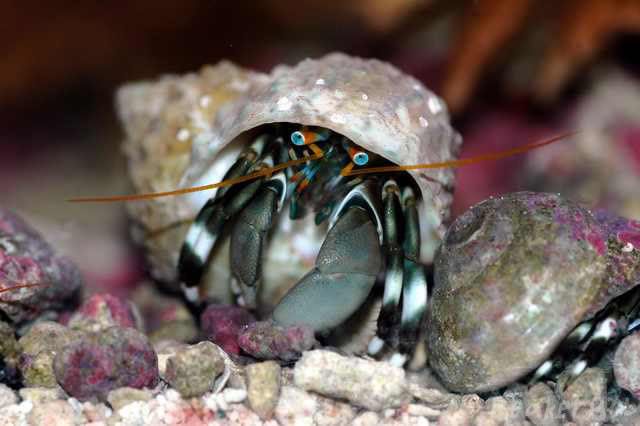
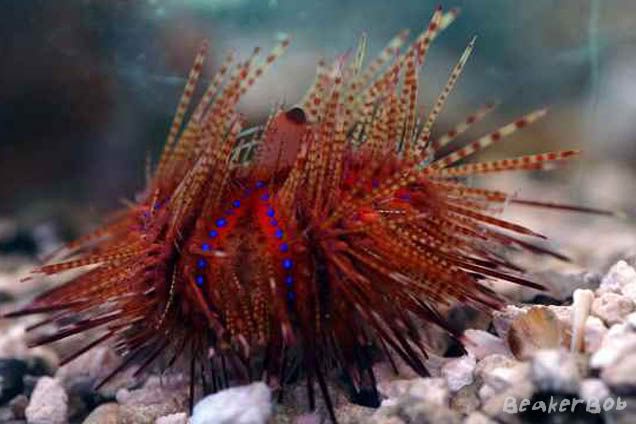
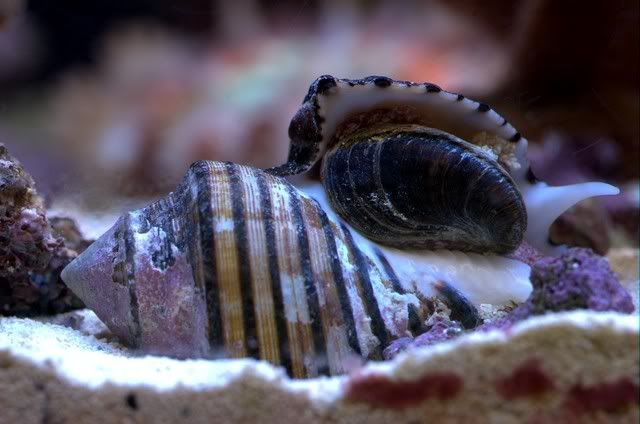
Instead of winning this battle with the green, my snails took to fraternizing amongst themselves and soon there were eggs all over the glass. Spawning snails blowing wisps of smoke trails into the water column was almost an everyday occurrence. Giant turbos procured to bulldoze the advancing wall of green took to knocking over every coral that they could. My frags became victims of friendly fire with their plugs littering the floor of my tank every day. Now, before I could grab handfuls of the vegetation, I had to check the body count of my precious corals daily and perform first aid on the injured ones, replacing them back into their positions.
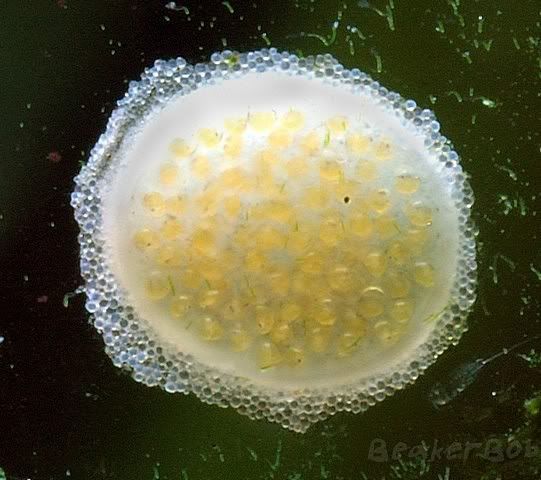
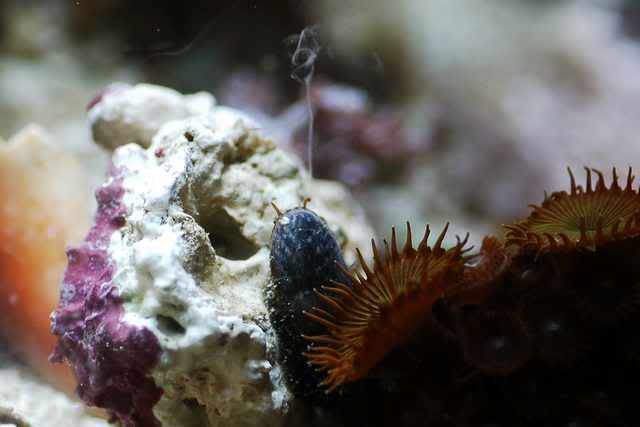
The hermit crabs turned into mercenaries, fighting amongst themselves. Roving bands of red legs would ambush a blue leg. Sporadic outbreaks of crustacean violence would occur, leaving small legs and claws littering the sand. The victors would seize the homes of the defeated and occupy the new shells.
Next: A new army of invertebrates!
-
10-24-2009, 07:38 AM #4

It appeared that my army of internal and external skeletoned vertebrates was not going to do the job. I was forced to consider the ones with no backbones or mobile homes, the invertebrates.
I picked up a blue spotted sea hare harlot and some sneaky looking green camouflaged lettuce nudibranchs. Maybe, just maybe, the perky hare could keep the foliage occupied while the nudibranchs infiltrated the shrubbery and start chowing down. The sea hare went to work immediately and mowed paths through the fields of green. The masked nudi’s crawled into the undergrowth, creating crop circles to dumbfound the casual observer. It looked as if the tide was turning until the sea hare went MIA. Yes, to this day the hare is still missing in action. The nudi’s continue to stuff themselves and grow larger by the week. Their main problem is battling the tank flow that threatens to blow them into the powerheads and chew them up.
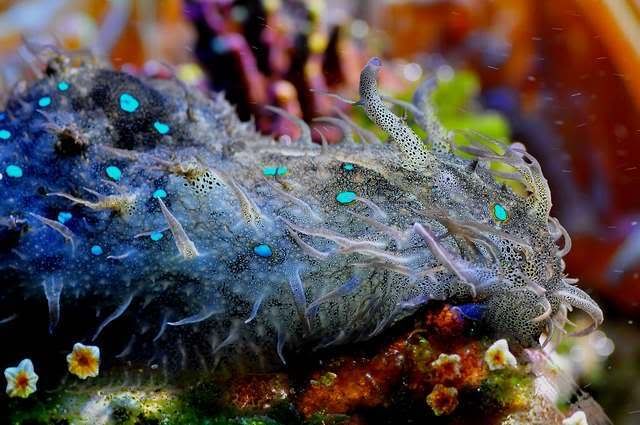
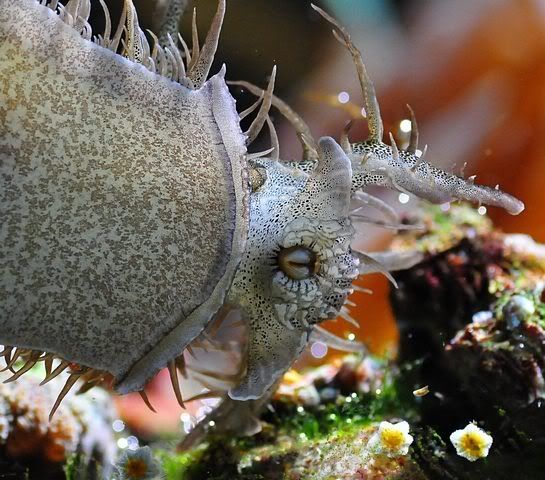
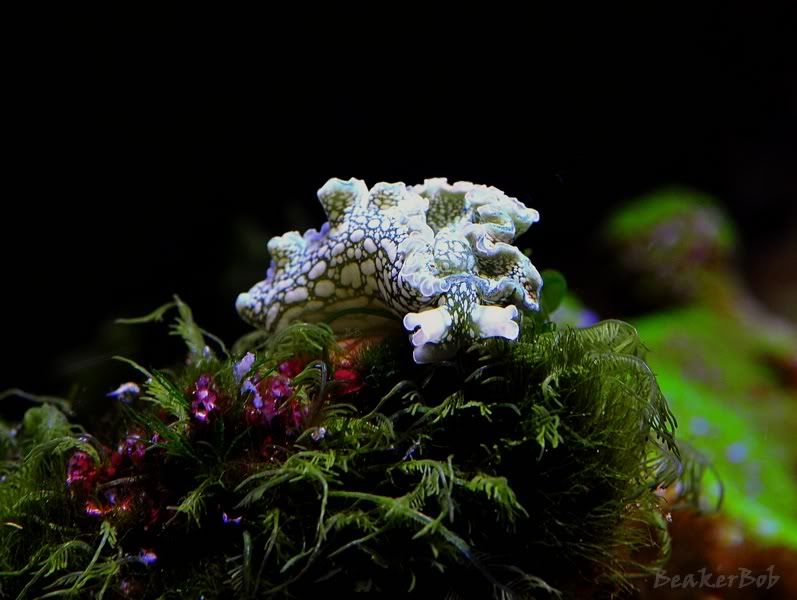

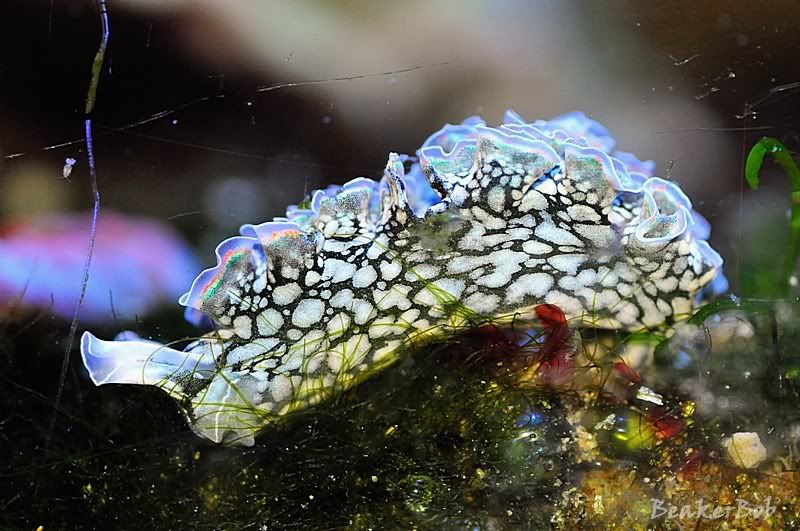
Next: Chemical warfare!Last edited by BeakerBob; 10-24-2009 at 07:49 AM.
-
10-24-2009, 07:50 AM #5

Well the biological solution did not work as planned. I had no other avenues of choice…….I would have to resort to Chemical Warfare…..a Weapon of Mass Destruction :bad:. But…..how can such a weapon exist that would be selective enough to destroy the advancing wall of green forest that seemed to grow on everything? What could I use that would kill the bryopsis, yet not harm my corals, fish, invertebrates and the other “good” floral and fauna?
This is where my skepticism as a chemist comes in. This chemical attack would be widespread. It will be in the water and globally applied. It will touch everything in the tank and sump and be metabolized, ingested and used in the respiratory process.
Eureka! I saw an advertisement for Ultra Algae, a “solution against algae growth”. Heck, it was even in German, and the definition of an expert is someone/something from outside the immediate area. This was from another country and was just being imported, therefore it had to be good stuff, right? Being the skeptic though, I continued slowly with due diligence and checked out the references, googled the stuff to see what others were saying, read the testaments from reefers waging the same war as I was. The stuff sounded like it was exactly what I needed, so I bought some along with some other fellow reefers.
We read the directions carefully, both in English and German. This chemical concoction would not only take care of bryopsis, but would also remove “hairy or plague type algae growth in Reef tanks” as well as dinoflagellates! Sounded deliciously evil, just what the doctor ordered! I connected with a few other reefers that were fighting the good battle with this new weapon and we became the agents of chemical terrorism.
I dosed this magic liquid elixir wondering what it was and what it was going to do to my tank. Yes, I dosed it religiously according to the directions and my broken interpretation of the German language. I delivered this lethal agent of destruction on my reef for 20 days, letting the powerheads disperse the unknown chemical into the water and throughout my system. I watched the tank daily for signs and symptoms of impending death. What would it look like? Would I then battle increased nitrates and phosphates? How would I decontaminate my tank and get the dead and dying bryopsis out? Should I wear gloves to prevent poisoning myself through skin absorption?
At day 20, a bad omen unveiled itself. A few of my sps corals had white tips, a bad sign. The bryopsis, however, was doing well. A frantic call was placed to my fellow chemical dosing terrorists yielded similar results, some more drastic than others. I stopped dosing and started massive water changes, silently cursing in German (funny how it is easier to pick up swear words in another language than it is to learn how to converse politely). I did not lose any corals, but other reefers did. I now have a stockpile of Algae X for anyone that may wish to try it out in their tank.
Next: Heavy MetalLast edited by BeakerBob; 10-24-2009 at 07:53 AM. Reason: spelling corrected
-
10-24-2009, 07:54 AM #6

Heavy metal poisoning is a slow death. Hatters went mad from the mercury used in the tannery and the phrase “Mad as a hatter” became commonplace. Arsenic was used as a poison of choice many years ago, but what could I use?
Reports of bryopsis destruction through the use of elevated magnesium were being circulated. I decided that would be the road of green destruction. My chemistry background should serve me well here, so I made up my own magnesium metal bomb. Chemical names and formulas are regulated by science, so I used a common formula consisting of Magnesium sulfate and Magnesium chloride. This combination is used widely for dosing and appears to be working to raise the level of magnesium.
With skepticism and amusement, I read the few reports of fellow reefers that stated only Kent M magnesium supplement would work to kill the bryopsis. What nonsense! :no: Any chemist worth his salt would say that magnesium is magnesium! With determination and incentive, I prepared gallons of this heavy metal, intending to reek havoc on the jungle that was now growing in my tank.
I started adding the prepared heavy magnesium metal concoction to my tank with glee, expecting green death and destruction within weeks. I poured the stuff in by the cupfuls. I watched and waited for my efforts to prove fruitful.
After using two gallons within two weeks, I saw no abatement of the green wall of growth. My magnesium levels were sky high, amazing those that performed the tests. Nothing happened.
Still determined, but now beaten, I ate crow and ordered a gallon of Kent M magnesium supplement. What could I lose? This was going to be my last effort before making the decision to tear down the tank and start fresh, a very big effort. I was still skeptical….what was the difference between my magnesium and Kents?
I dosed 100 mL’s per day for 10 days. My magnesium levels were above 1700. I watched carefully. What was happening? The tips of the bryopsis was turning white!
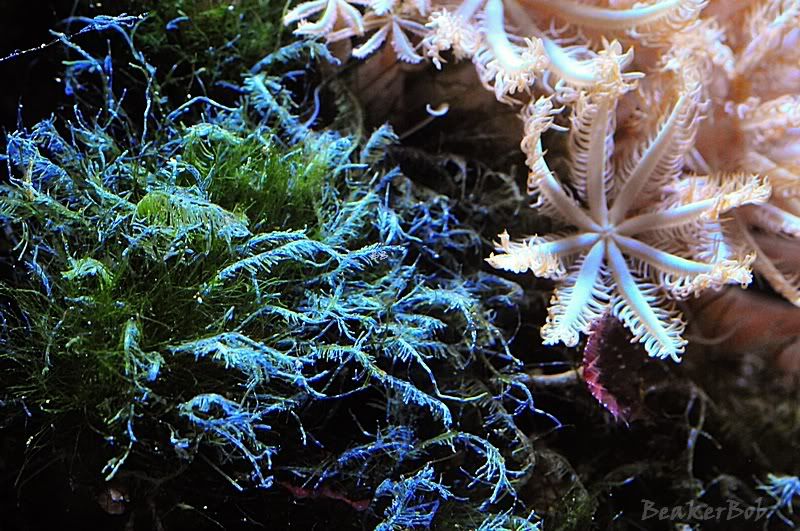
The stems were turning transparent and I could see the chloroplasts residing in the vegetative cells! The bryopsis turned into complete ghosts within days, then blew off into the current.
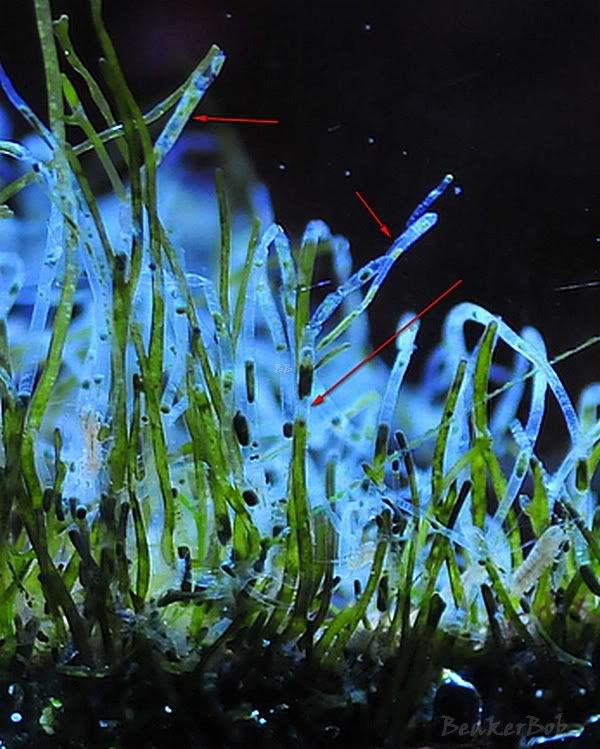
Skeptic no more!! Kent M works! My bryopsis is totally gone! My corals and all the other reef and floral inhabitants are not affected by this dramatic increase in magnesium. But (says the skeptical chemist within), what is the cause for this destruction and why is it selective? I suspect that there are other chemicals impacting the growth and longevity of the bryopsis. Could it be sulfates? I don’t know, but my bryopsis is gone!
Will it come back? Hopefully not, but I notice that since the bryopsis is gone, another opportunistic algae is now growing. It appears to be related to hair algae, but grows in medium length carpets that are easily pulled dislodged like tufts of moss. This new vegetation is not as invasive and does not appear to grow at the phenomenal rate that the bryopsis does. Hopefully, this stuff will soon disappear.
I will keep you posted on my efforts to eradicate this growing menace from our tanks. If you have had similar or differing experiences, post in this thread so that we can all learn from others.
-
11-15-2011, 01:37 PM #7

My Mg level was over 2,000. I stopped the homemade treatment, watched the bryopsis for a couple days top see what prolonged contact would do, after no effects, did a 30% water change, and after 2 weeks started the Kent Tech M treatment.
BeakerBob - Past MMMC Club President, current Board Member
-
11-15-2011, 01:48 PM #8CR Member


- Join Date
- Aug 2009
- Location
- Michigan USA
- Posts
- 113
 Need to laugh sometimes http://cheezburger.com/View/5382969600
Need to laugh sometimes http://cheezburger.com/View/5382969600
Similar Topics
-
Bryopsis - Magnesium - GFO discussion
By jimsflies in forum BasicsReplies: 40Last Post: 01-27-2012, 08:22 PM -
Bryopsis
By graphixx in forum Feature ArticlesReplies: 5Last Post: 02-22-2010, 08:03 PM -
Flow & Plumbing Tech M. Bryopsis massacre I hope.
By Tom Toro in forum HardwareReplies: 28Last Post: 01-11-2010, 05:20 PM -
Algae & Pests Bryopsis Algae
By MizTanks in forum BasicsReplies: 17Last Post: 10-21-2009, 04:05 PM


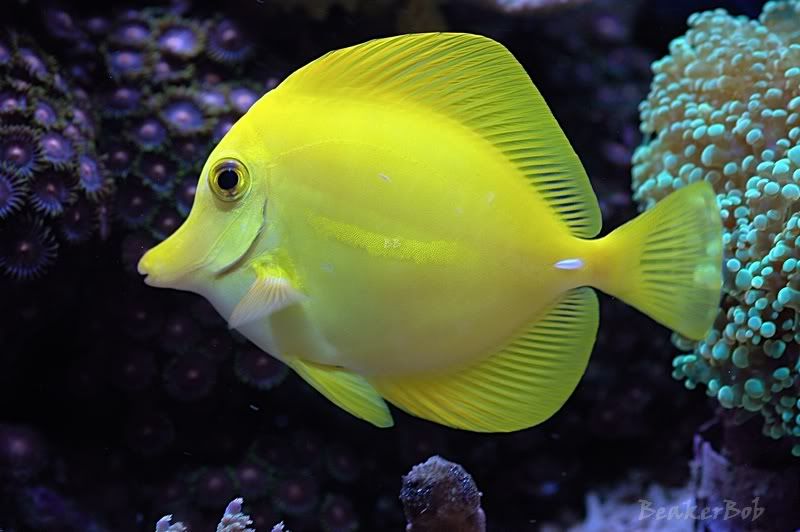


 Reply With Quote
Reply With Quote

